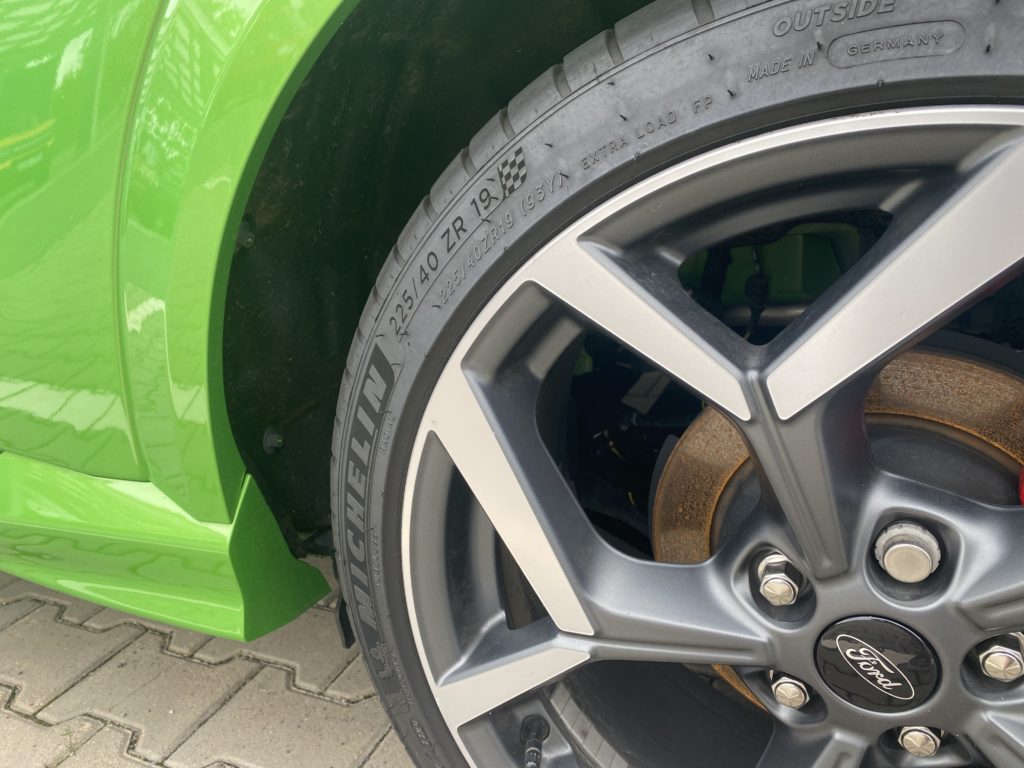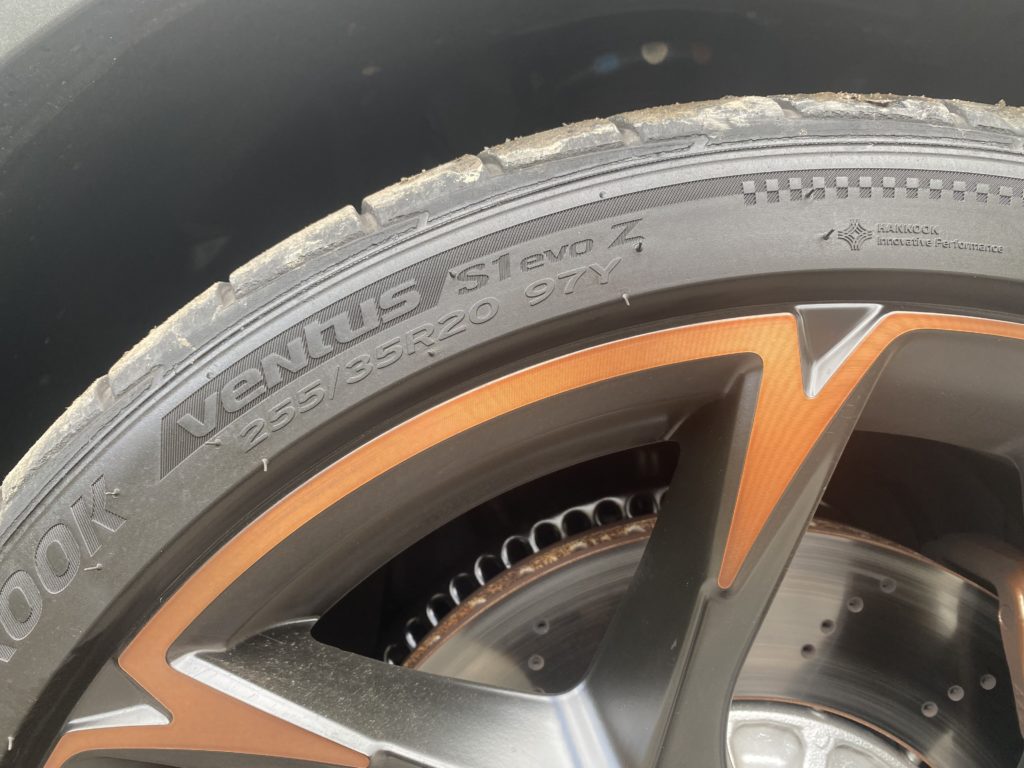☰
Introduction
Choosing the right tyres for your car is essential for optimal performance, safety, and driving comfort. With a wide variety of tyre designations and specifications available, it can be challenging to make an informed decision. In this blog post, we will explore the differences between R and ZR tyres, helping you understand their unique features and which type might be the best fit for your vehicle.
R Tyres: The Basics
R tyres, or radial tyres, are a common type of tyre found on many passenger cars, SUVs, and light trucks. The ‘R’ in the designation stands for ‘radial,’ which refers to the internal construction of the tyre. Radial tyres feature layers of fabric, steel, or other materials arranged in a radial pattern across the tyre, from the centre of the tread to the sidewall. This construction offers several advantages:
- Improved ride comfort: The radial design allows the sidewalls to flex more easily, absorbing road imperfections for a smoother ride.
- Better fuel efficiency: Due to their flexible construction, radial tyres generate less rolling resistance, which can result in improved fuel economy.
- Enhanced traction: The radial design helps distribute pressure evenly across the tread, allowing for better contact with the road and improved grip.
ZR Tyres: High-Performance Option
ZR tyres, also known as high-performance tyres, are designed for vehicles that demand exceptional handling, speed, and cornering capabilities. The ‘Z’ in the designation stands for ‘speed rating,’ indicating that these tyres are designed to handle speeds above 240 km/h. The ‘R’ in ZR tyres also stands for radial, meaning they share the radial construction features found in standard R tyres. However, ZR tyres offer several additional benefits:
- Enhanced handling: ZR tyres typically feature stiffer sidewalls and a larger contact patch, allowing for better grip and more responsive handling at high speeds.
- Improved heat dissipation: High-performance driving generates a significant amount of heat, which can cause standard tyres to degrade quickly. ZR tyres are designed to better withstand and dissipate heat, ensuring optimal performance and longevity.
- Speed capability: As mentioned earlier, ZR tyres are designed for high-speed applications, making them suitable for performance-oriented vehicles and driving enthusiasts.

Speed Indexes Relevant to ZR Tyres
The speed rating of a tyre is represented by a letter, which corresponds to a specific maximum speed. Here is a table of speed indexes relevant to ZR tyres:
| Speed Index | Maximum Speed (km/h) |
|---|---|
| W | 270 |
| Y | 300 |
| (Y) | Above 300 |
While not all tyres with speed index W or higher have to be ZR tyres, it is very common and it usually is the case with UUHP tyres and other tyres designed for high speed dynamic driving. Sometimes, car manufacturers require ZR tyres to be used in the documentation of the vehicle and if that is the case, you should use it. But your main concern should always be the speed index, which is standardized across all tyre manufacturers. Whether the tyre is marketed a ZR or just R is just the manufacturers decision and doesn’t have to have any meaning in terms of quality or sportiness. Key for your decision should be your own research, preferably including tyre tests.

For clarity, let’s brake down what each of the tyre marking means:
Yokohama Advan Sport V105 245/40ZR20 99Y XL RPB
Each part of the tyre marking provides essential information about the tyre’s specifications and performance. Let’s break down the markings to understand each component:
- Yokohama: The brand or manufacturer of the tyre.
- Advan Sport V105: The model name of the tyre, which usually indicates its design and performance characteristics.
- 245: The width of the tyre in millimeters. This tyre has a width of 245mm.
- 40: The aspect ratio, which is the height of the tyre’s sidewall expressed as a percentage of its width. In this case, the sidewall height is 40% of the tyre’s width (245mm).
- ZR: The tyre’s construction type and performance category. ZR indicates a radial tyre (R) with a Z speed rating, designed for high-performance vehicles and capable of handling speeds exceeding 240 km/h (149 mph).
- 20: The diameter of the wheel the tyre is designed to fit, measured in inches. This tyre is meant for a 20-inch wheel.
- 99Y: The tyre’s load and speed index enclosed in parentheses. ’99’ is the load index, which represents the maximum load-carrying capacity of the tyre (approximately 775 kg or 1,709 lbs). ‘Y’ is the speed index, indicating that the tyre is rated for speeds up to 300 km/h
- XL: This stands for “Extra Load.” XL tyres have a reinforced construction, which enables them to carry heavier loads compared to standard tyres. This is particularly useful for larger or heavier vehicles, or when you need to transport heavy cargo.
- RPB: This acronym stands for “Rim Protection Bar.” RPB is a feature incorporated into the tyre’s design that provides additional protection for the wheel rim against curb damage. This raised rubber ridge acts as a buffer, reducing the likelihood of the alloy wheel rim making contact with the curb or other obstacles.
Let`s have a look at a tyre with the maximum possible speed index (Y), which is for cars exceeding 300km/h+:
Falken Azenis FK510 (★58) 225/40 ZR18 92(Y) XL MFS
- 225: The width of the tyre in millimeters. This tyre has a width of 225mm.
- 40: The aspect ratio, which is the height of the tyre’s sidewall expressed as a percentage of its width. In this case, the sidewall height is 40% of the tyre’s width (225mm).
- ZR: The tyre’s construction type and performance category. ZR indicates a radial tyre (R) with a Z speed rating, designed for high-performance vehicles and capable of handling speeds exceeding 240 km/h (149 mph).
- 18: The diameter of the wheel the tyre is designed to fit, measured in inches. This tyre is meant for an 18-inch wheel.
- 92(Y): The tyre’s load and speed index enclosed in parentheses. ’92’ is the load index, which represents the maximum load-carrying capacity of the tyre (approximately 630 kg or 1,389 lbs). ‘(Y)’ is the speed index, indicating that the tyre is rated for speeds higher than 300 km/h (186 mph).
- XL: This stands for “Extra Load.” XL tyres have a reinforced construction, which enables them to carry heavier loads compared to standard tyres. This is particularly useful for larger or heavier vehicles, or when you need to transport heavy cargo.
- MFS: This acronym stands for “Maximum Flange Shield.” MFS is a feature incorporated into the tyre’s design that provides additional protection for the wheel rim against curb damage. It is similar to the RPB (Rim Protection Bar) feature mentioned earlier. This raised rubber ridge acts as a buffer, reducing the likelihood of the alloy wheel rim making contact with the curb or other obstacles.